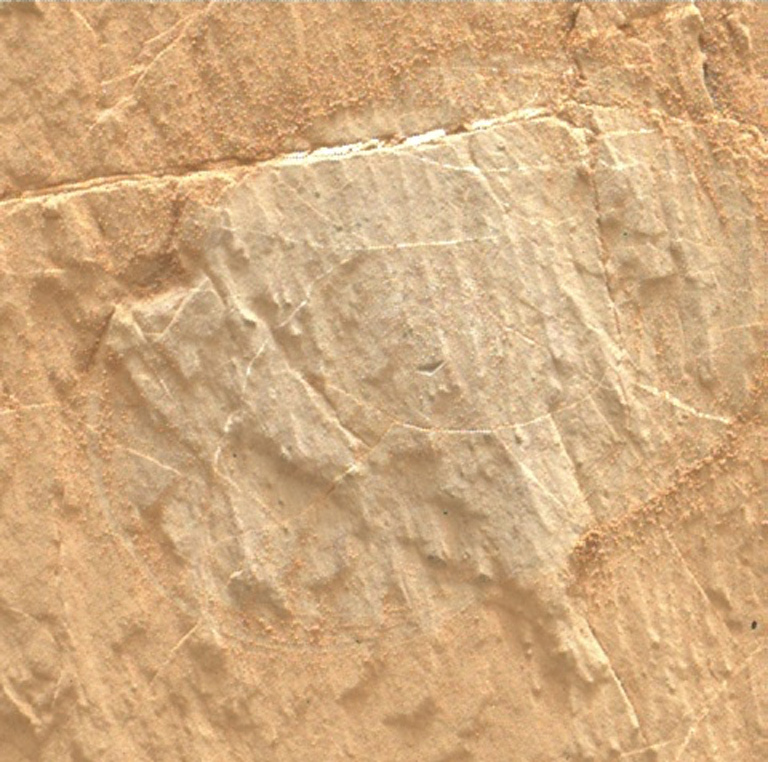2 min read

To me, it seems like Curiosity was sitting on top of the Greenheugh pediment getting ready to drill “Edinburgh” just yesterday, and yet we’re already preparing to drill another rock in this weekend’s plan, a target we’ve named “Glasgow.” Combined with “Hutton,” these three drilled samples will give us a wonderful snapshot of the range of compositions of the three major geologic units we’ve explored in this region.
Wednesday’s pre-load test on Glasgow was successful, and even created a small divot where the drill tip pressed down onto the rock (visible in the center of the above image), which suggests this rock might be somewhat soft. The chemical data from ChemCam and APXS also were in family with other rocks in this area, so the team quickly decided we were go to continue with the full drill, which will execute in the second sol of the three-sol weekend plan. On the first sol of the plan, we will take Mastcam images of the rover’s deck, some sand-filled troughs in the area, and a mosaic to capture the view of nearby Tower Butte and Greenheugh pediment with a new perspective from our current location. We will also take some additional MAHLI images of areas in our workspace. The third sol of the plan has a lot of remote sensing, including Mastcam and Navcam environmental science observations, a Mastcam multispectral image and ChemCam passive spectral observation in the expected location of the drill tailings, a ChemCam z-stack of the expected drill hole, and ChemCam LIBS observations of an area near the drill spot, “Glasgow_2”, and “Canongate.”
Fingers crossed at least some socially-distant team members will be able to enjoy the traditional post-drill donut holes during planning on Monday morning!
Written by Abigail Fraeman, Planetary Geologist at NASA's Jet Propulsion Laboratory







